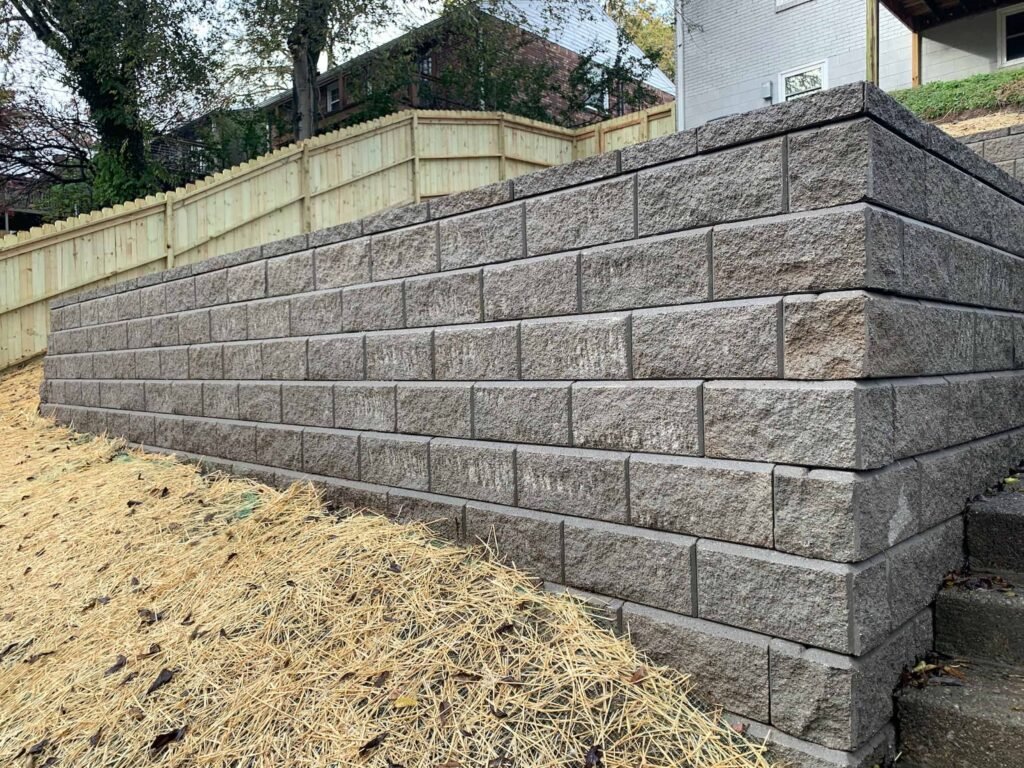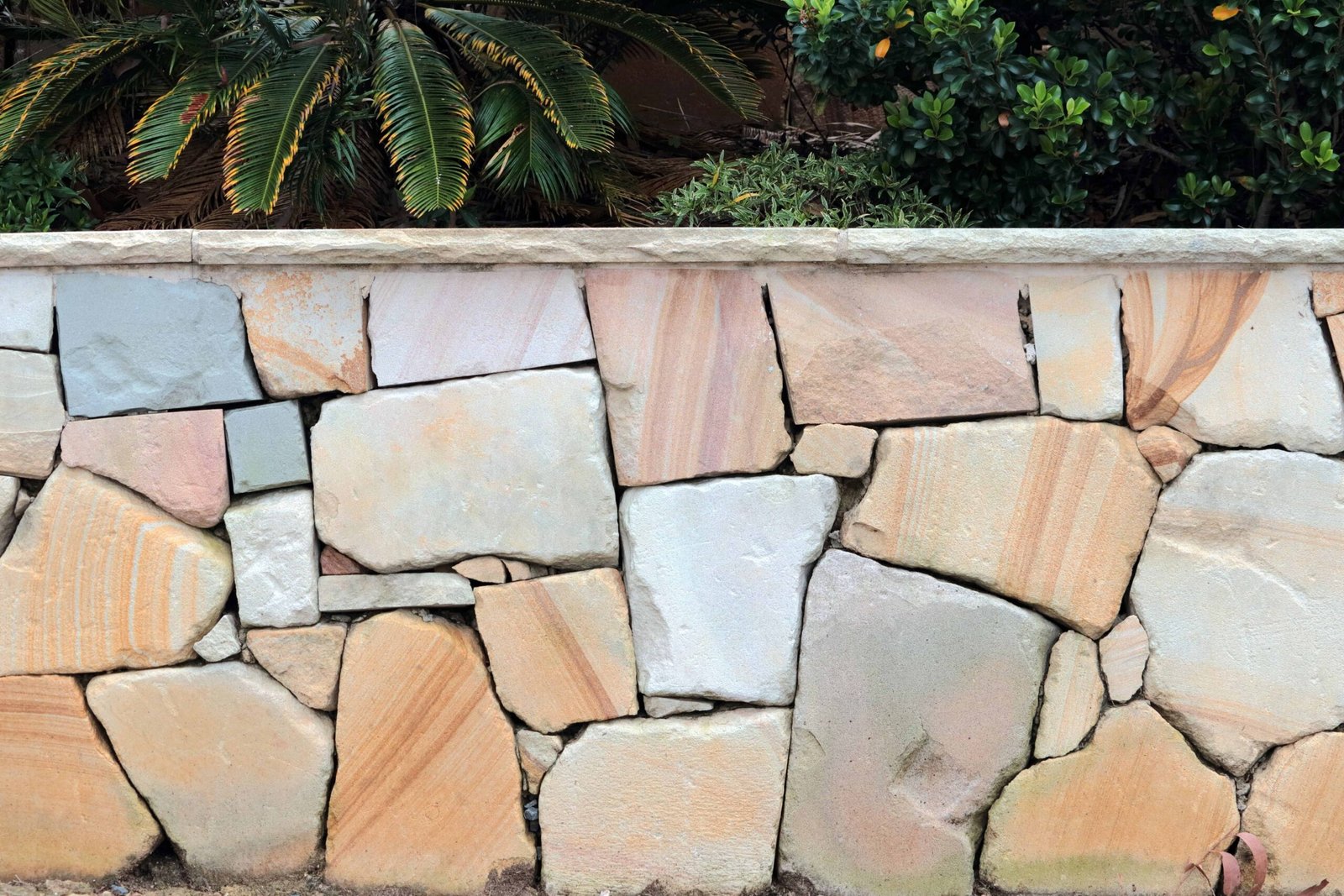- Home
- Retaining Wall
Retaining Wall
The Comprehensive Guide to Retaining Walls and Seawalls in Michigan
Mason Master Hand - At Your Service!
Contact Us Today!
Retaining walls and seawalls are essential structures in various landscaping and construction projects, providing both functional and aesthetic benefits. In Michigan, these structures play a crucial role due to the state’s unique topography and climate conditions. This comprehensive guide will explore what retaining walls and seawalls are, their purposes, the different types available, and the specific considerations for building them in Michigan. We’ll also compare retaining walls to seawalls and discuss their use in other countries.
What is a Retaining Wall?
Definition and Purpose
A retaining wall is a structure designed to hold back soil and prevent erosion on sloped terrain. It serves both practical and aesthetic purposes, creating level areas for landscaping, preventing soil erosion, and enhancing the overall appearance of a property.
Key Purposes
- Soil Retention: Prevents soil erosion and manages water runoff.
- Landscaping: Creates usable flat spaces on hilly terrain for gardens, patios, or driveways.
- Structural Support: Provides stability to sloped areas, preventing landslides or soil movement.
- Aesthetic Enhancement: Adds visual appeal to a property through various designs and materials.
Types of Retaining Walls
There are several types of retaining walls, each with unique features and benefits. Here are the most common types:
Gravity Retaining Walls
Gravity retaining walls rely on their own weight to hold back soil. They are usually made from heavy materials such as concrete, stone, or brick.
| Feature | Description |
|---|---|
| Construction | Thick at the base and tapering towards the top. |
| Materials | Concrete, stone, brick. |
| Strength | Suitable for low to medium height walls. |
| Advantages | Simple construction, durable, and effective for short walls. |
| Disadvantages | Requires significant material and space. |
Cantilever Retaining Walls
Cantilever retaining walls are made from reinforced concrete and utilize a leverage system to hold back soil. They have a thin stem and a base slab.
| Feature | Description |
|---|---|
| Construction | L-shaped with a base slab extending under the soil. |
| Materials | Reinforced concrete. |
| Strength | Suitable for medium to high height walls. |
| Advantages | Efficient use of materials, strong, and can handle higher loads. |
| Disadvantages | Requires more complex construction and reinforcement. |
Sheet Pile Retaining Walls
Sheet pile retaining walls are made from steel, vinyl, or wood planks driven into the ground. They are often used in areas with soft soils or tight spaces.
| Feature | Description |
|---|---|
| Construction | Vertical planks driven deep into the ground. |
| Materials | Steel, vinyl, wood. |
| Strength | Suitable for both temporary and permanent structures. |
| Advantages | Ideal for tight spaces, easy to install, and suitable for various soil types. |
| Disadvantages | May not be as visually appealing as other types. |
Anchored Retaining Walls
Anchored retaining walls are reinforced by cables or rods anchored into the rock or soil behind the wall. They are used when additional support is needed.
| Feature | Description |
|---|---|
| Construction | Wall with anchors driven into the surrounding soil or rock. |
| Materials | Various materials (concrete, stone, steel) combined with anchors. |
| Strength | Suitable for high load and high wall applications. |
| Advantages | Very strong, suitable for challenging conditions, can handle heavy loads. |
| Disadvantages | Complex and expensive to construct. |
Segmental Retaining Walls
Segmental retaining walls are built using interlocking blocks that do not require mortar. They are flexible and can be used for various heights.
| Feature | Description |
|---|---|
| Construction | Interlocking blocks stacked without mortar. |
| Materials | Concrete blocks, sometimes reinforced with geogrid. |
| Strength | Suitable for low to medium height walls. |
| Advantages | Easy to install, flexible design, and visually appealing. |
| Disadvantages | Limited height without additional reinforcement. |
Building Retaining Walls in Michigan
Unique Considerations for Michigan
Michigan’s climate and soil conditions present specific challenges and considerations for building retaining walls. Here’s how constructing retaining walls in Michigan differs from other states:
Freeze-Thaw Cycles
Michigan experiences significant freeze-thaw cycles, which can cause soil movement and put stress on retaining walls. Using frost-resistant materials and proper drainage systems is essential to prevent damage.
Soil Conditions
Michigan’s soil can vary widely, from sandy soils to heavy clay. A thorough soil analysis is necessary to determine the appropriate type of retaining wall and foundation required for stability.
Seasonal Construction
The construction season in Michigan is shorter due to harsh winters. Retaining wall projects need to be planned and executed efficiently during the warmer months, requiring careful project management.
Retaining Walls in Other Countries
Retaining walls are popular in many countries around the world, often used for similar purposes as in the United States, such as soil retention, landscaping, and creating usable land on slopes. However, the materials and construction techniques can vary based on local resources and conditions.
Examples of Retaining Walls Around the World
- Japan: Stone retaining walls are common in terraced rice fields.
- Italy: Ancient stone walls are used in vineyards and hilly landscapes.
- Australia: Concrete and timber retaining walls are popular in residential and commercial landscaping.
Seawalls: Definition and Purpose
What is a Seawall?
A seawall is a structure built along the coastline to prevent erosion and protect land from the impact of waves and storm surges. Seawalls are designed to absorb and reflect wave energy, reducing the potential for coastal damage.
Key Purposes
- Erosion Control: Prevents coastal erosion caused by waves and tidal action.
- Property Protection: Protects coastal properties and infrastructure from damage.
- Flood Prevention: Helps prevent flooding in coastal areas during storms and high tides.
Types of Seawalls
Vertical Seawalls
Vertical seawalls are straight up-and-down structures designed to reflect wave energy. They are often used in areas with high wave activity.
| Feature | Description |
|---|---|
| Construction | Vertical structure with a flat face. |
| Materials | Concrete, steel, timber. |
| Advantages | Effective in high-energy wave environments. |
| Disadvantages | Can cause wave reflection, leading to increased erosion at the base. |
Curved Seawalls
Curved seawalls have a curved face that helps dissipate wave energy, reducing the impact on the structure and the coastline.
| Feature | Description |
|---|---|
| Construction | Curved structure to dissipate wave energy. |
| Materials | Concrete, stone. |
| Advantages | More effective at dissipating wave energy, reducing erosion. |
| Disadvantages | More complex and expensive to construct. |
Rubble Mound Seawalls
Rubble mound seawalls, also known as revetments, are made from loose stones or rubble piled up against the shore. They absorb wave energy through the movement of the stones.
| Feature | Description |
|---|---|
| Construction | Piles of loose stones or rubble. |
| Materials | Stone, concrete blocks. |
| Advantages | Natural appearance, effective at absorbing wave energy. |
| Disadvantages | Requires regular maintenance to replace displaced stones. |
Building Seawalls in Michigan
Unique Considerations for Michigan
Building seawalls in Michigan involves specific considerations due to the state’s Great Lakes coastline and variable weather conditions.
Great Lakes Conditions
The Great Lakes have their unique wave and water level patterns, which can be different from oceanic conditions. Seawalls must be designed to withstand these specific conditions.
Seasonal Weather
Michigan’s cold winters and freeze-thaw cycles can affect seawall integrity. Using frost-resistant materials and proper construction techniques is essential to ensure durability.
Environmental Regulations
Building seawalls in Michigan often requires compliance with state and federal environmental regulations to protect natural habitats and water quality.
Differences Between Retaining Walls and Seawalls
Purpose
- Retaining Walls: Primarily used for holding back soil and creating level areas on slopes.
- Seawalls: Designed to protect coastal areas from wave action and prevent erosion.
Construction
- Retaining Walls: Built on land, often with a focus on aesthetics and landscaping.
- Seawalls: Built along coastlines, requiring materials and designs that can withstand constant water exposure.
Materials
- Retaining Walls: Can use a variety of materials including concrete, stone, and wood.
- Seawalls: Typically use more durable materials like concrete, steel, and stone to withstand harsh marine conditions.
Conclusion
Retaining walls and seawalls are essential structures for managing soil and water in both residential and commercial settings. In Michigan, these structures must be designed and built to withstand the state’s unique weather and soil conditions. Whether you’re looking to enhance your property’s landscaping with a retaining wall or protect your shoreline with a seawall, Mason Master Hand offers expert services to ensure durable and aesthetically pleasing results. Our commitment to quality and customer satisfaction makes us the ideal choice for all your retaining wall and seawall needs.
Contact Us
If you are interested in learning more about our retaining wall and seawall services or would like to schedule a consultation, please contact us:
- Phone: 844-896-2766
- Email: admin@masonmasterhand.com
- Website: www.masonmasterhand.com
Our team is ready to assist you with all your retaining wall and seawall needs in Michigan. Experience the Mason Master Hand difference and enjoy a beautiful, durable structure that will last for years to come.
Call Now!
If you’re looking for professional retaining wall services in Flint, Flushing, Saginaw, Bloomfield Hills, or other areas in Michigan, look no further than Mason Master Hand.
We specialize in retaining walls, concrete, stone walls, fireplaces and chimneys, patios, walkways, driveways, epoxy, and stone restoration.
Contact us today at (844) 896-2766 to schedule a consultation, and let us help you enhance the beauty and durability of your property with our expert stonemasonry services.



